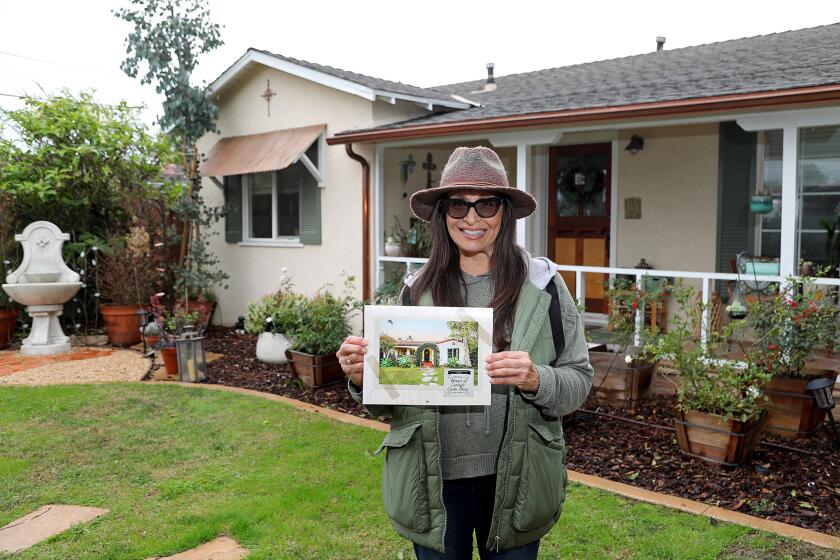Costa Mesa Realtor hopes ‘Historic Properties’ calendar will inspire local preservation
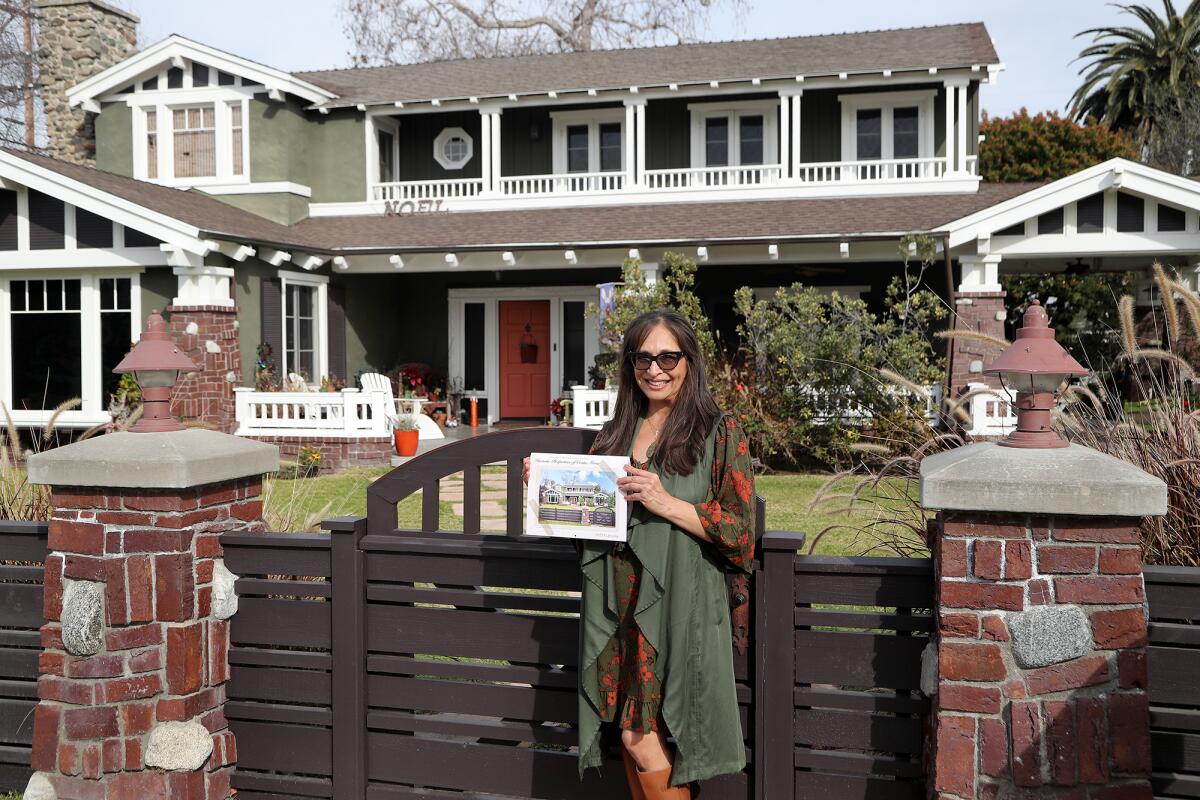
- Share via
Costa Mesa resident Renee Pina is on a mission to preserve the city’s historic homes, one property, and one page, at a time.
The longtime Realtor and owner of local agency Pina & Co. had an idea in late 2021 to create a calendar of residences in the city’s Eastside neighborhood known for their provenance and architectural style.
Assembled in the span of just a few weeks, and with permission from homeowners, 400 copies of “Historic Homes of Eastside Costa Mesa” were displayed at local businesses and that 2022 edition quickly sold out, with proceeds benefiting the Costa Mesa Historical Society.
Not content to rest on her laurels, Pina decided to create a calendar for 2023. The new project would build on last year’s momentum by focusing specifically on homes identified by the city in 1997 as eligible for inclusion on a Local Register of Historic Places.
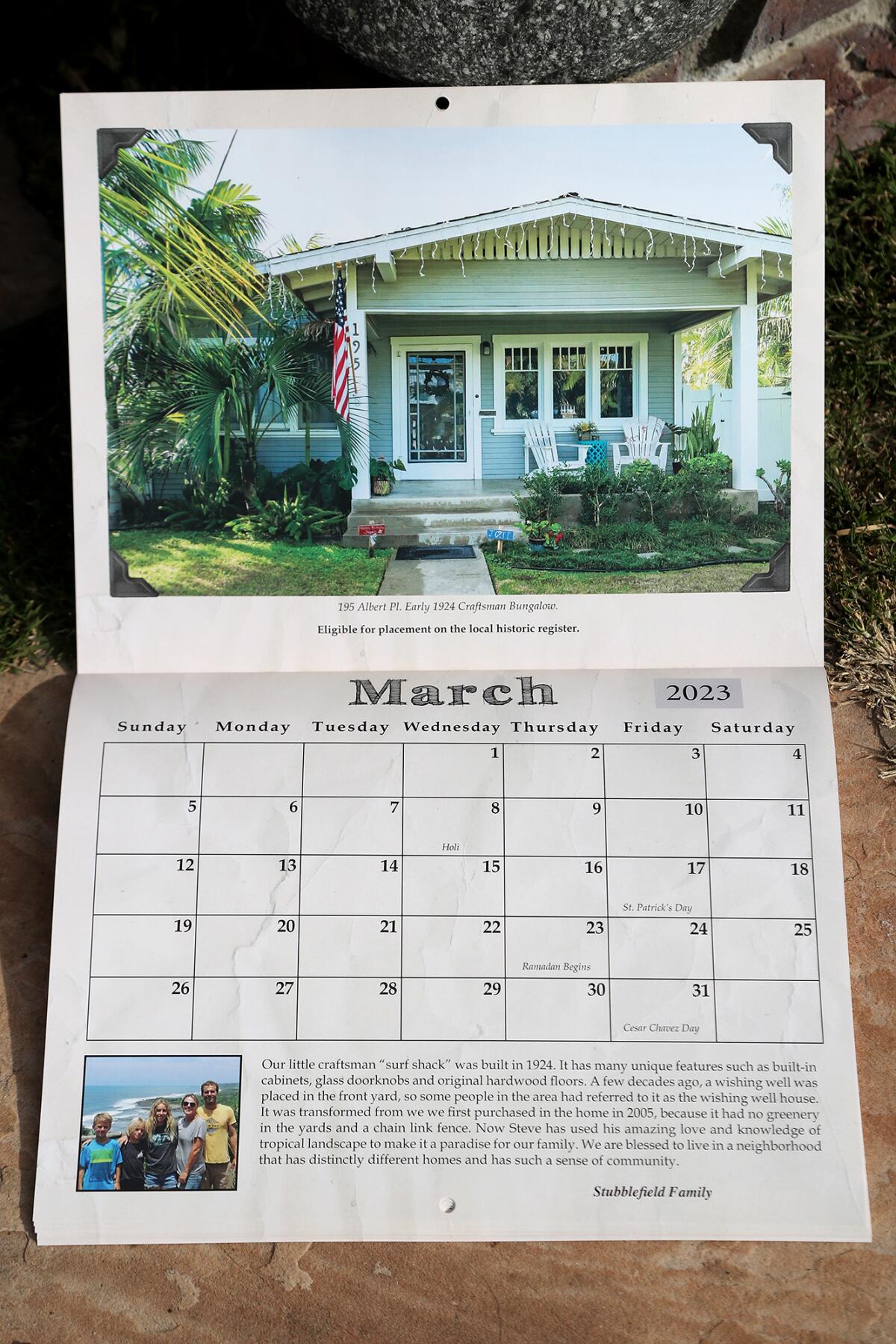
“Historic Properties of Costa Mesa” is now available for $10 at Kéan Coffee, Eastside Mini-Mart and the Costa Mesa Historical Society, which will again receive the proceeds.
“This new calendar is all about the houses, the owners who love them and what they love about these houses, these neighborhoods and living in a home like this,” Pina said in a recent interview.
Featured on the cover is a two-store Monterey-style house at 200 Magnolia St. constructed in 1936 by a local builder who included several personal touches in the home’s interior.
Jill Hubbard, a clinical psychologist who chanced upon the property in 1999 while scoping out houses for family members and fell in love with it, purchased it and spent about a year spiffing up the interior.
“I was so excited about it because I love unique and eclectic vintage types of things, and I could see this house had great potential and so many cool features,” she said, describing an operable Thermador oven and built-in bunk beds with hand carvings in what would be her son’s bedroom.

When Pina approached her about including the home in the calendar, Hubbard was thrilled. Although not actively seeking a Mills Act designation, she believes maintaining history is important.
“I really tried to keep the integrity of the house as much as possible, while giving it a facelift and making it more livable,” Hubbard said. “I love that [Renee] wants to preserve and bring to life historical aspects of Costa Mesa.”
Pina’s calendar project is just a start. The Realtor is forming a nonprofit neighborhood preservation society to inform homeowners and support them in seeking historic designations, including Mills Act status, for their properties.
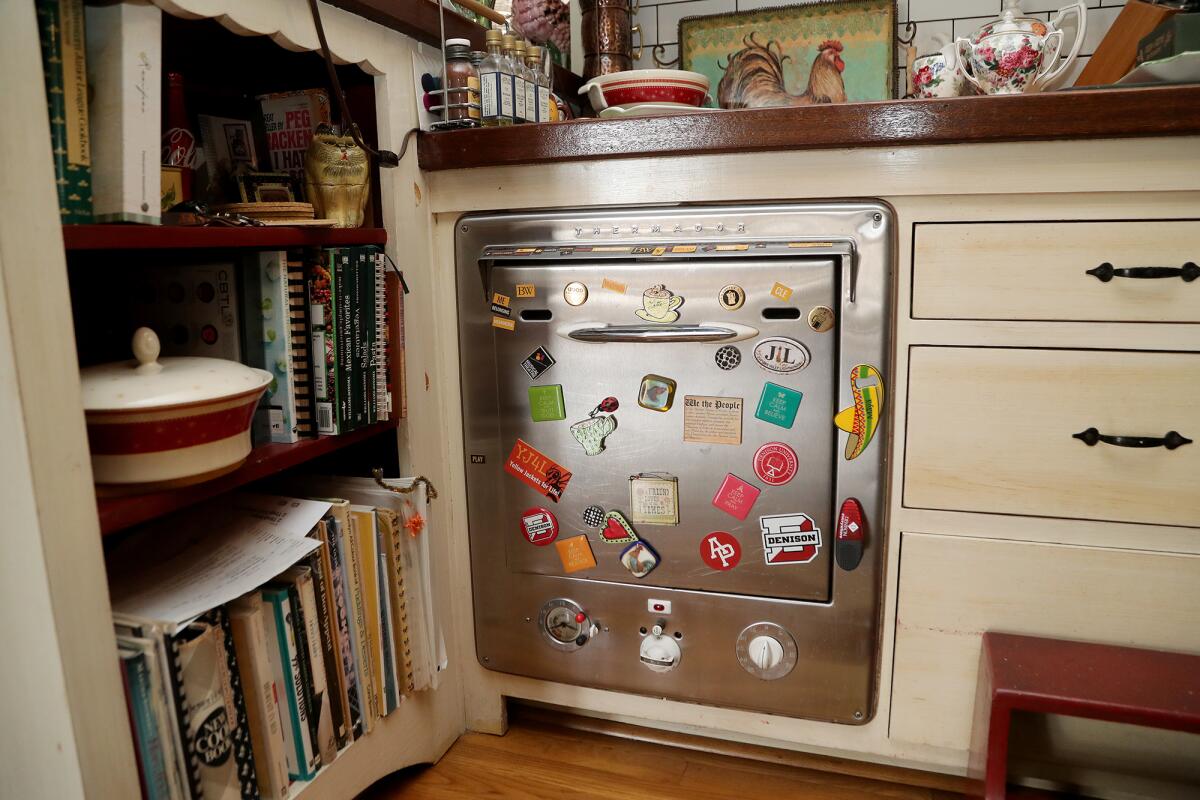
Established in 1976, California’s Mills Act incentivizes the preservation and upkeep of historically significant structures, in part, by offering owners an average 20% to 70% break on their property taxes.
In exchange, owners sign a contract, pledging to maintain the property’s historic or architectural character and seek approval of renovation plans. In some cases, the designation and its attendant obligations carry over to new owners.
Pina said Costa Mesa has a Mills Act program but hasn’t done much to promote it.
“There isn’t a very robust program here, which is why I’m trying to raise awareness,” she said. “There’s only one Mills Act house in Costa Mesa. The owner fought for the city to do [that].”

That property is the Huscroft House, a craftsman-style residence built in Santa Ana between 1903 and 1915. Moved to Costa Mesa in the 1950s and later sold to a developer, who gifted the home to the city in the late 1990s, the structure sat at TeWinkle Park until 2003 while officials considered its fate.
John Morehouse acquired the deteriorating dwelling, moving it to Bernard Street and spending as much as $500,000 rebuilding its roof and devastated interior, with the hopes of finding a buyer.
Realtor Renee Pina created the 2022 calendar, “Historic Homes of East Side Costa Mesa” to celebrate early 20th-century residences and benefit the Costa Mesa Historical Society.
Mary Ellen Goddard, an archivist and board member for the Costa Mesa Historical Society, said the organization was approached about turning the property into a historic house museum.
“Some people wanted the Historical Society to take over the house,” she recalled Thursday. “We just didn’t have the people or the money to do that.”
Undaunted, Morehouse shifted his focus to getting the city to participate in the Mills Act Program. The endeavor was successful but, today, the Huscroft House is reportedly the only Costa Mesa building with the designation.
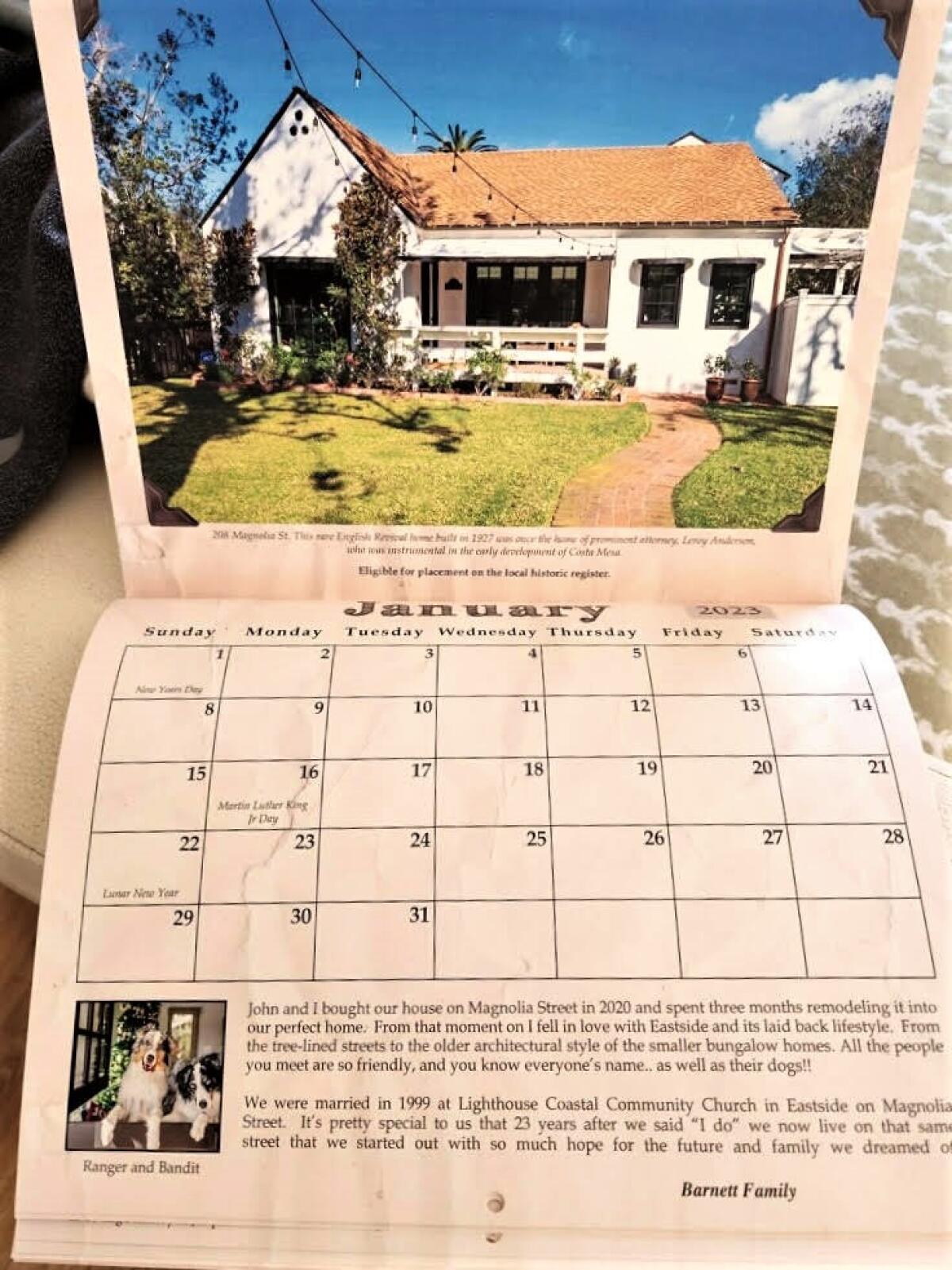
Pina attributes this to the fact that interested homeowners must pay $10,000 to apply for consideration.
“It’s kind of sad, with everything we have here in the city there’s only one Mills Act home,” she said. “That’s why I’ve started this project.”
Among the homeowners in Pina’s 2023 calendar is John Barnett, who purchased an English Revival style home at 208 Magnolia St. in 2020. One of the first things he asked was whether the house was a Mills Act property.
“I thought it would be a pretty straightforward thing to do — it’s been kind of a big ordeal,” Barnett said, explaining how consultants have gotten involved to determine the house’s eligibility. “The city’s been great. But that’s a pretty steep price to pay with no guarantee.”
Pina said she’s willing to help owners like Barnett get their homes placed on the Local Register of Historic Places or obtain Mills Act status.
“Somebody’s got to spearhead this and get this moving,” she said. “This is to protect our homes and our history.”
All the latest on Orange County from Orange County.
Get our free TimesOC newsletter.
You may occasionally receive promotional content from the Daily Pilot.
